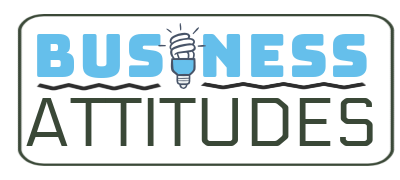40 Tips for Instructional Designers to create great content for your learners.
In my 20 years in instructional design, I have found that most of us do not wake up one more and say, “I am going into instructional design.” It is usually a process or a current career that leads us to create content. I wanted to share 40 quick tips to help you as you create content for learners.
 Focus first on learning objectives to guide content. Well-defined goals keep your course focused.
Focus first on learning objectives to guide content. Well-defined goals keep your course focused.- Chunk information into small, digestible sections to reduce cognitive load. Short segments promote retention.
- Use a conversational tone to connect with learners. Write like you speak to make it relatable.
- Simplify complex topics by breaking them into step-by-step sequences. Small achievable steps promote mastery.
- Employ active learning with scenarios, assessments, and exercises. Apply skills rather than just acquire knowledge.
- Use varied methods like video, audio, text, and imagery for multi-modal learning. Appeal to different preferences.
- Organize content logically around key principles to promote understanding. Structure promotes comprehension.
- Summarize key learnings and have learners self-assess mastery. Reinforce retention of core concepts.
- Write clearly and concisely. Omit fluff. Getting straight to the point keeps learners focused.
- Add relevant examples and analogies to illustrate complex processes. Relatable associations boost learning.
- Promote application by having learners complete realistic projects or case studies. Applying skills solidifies learning.
- Create opportunities for learner discussion and peer feedback. Social connections improve motivation and accountability.
- Use inclusive language and globally diverse examples. Every learner should feel represented.
- Design simple, uncluttered visuals that reinforce concepts. Visuals enhance understanding when relevant.
- Include moments of humor and levity when appropriate to boost engagement. A little fun keeps the energy up.
- Provide transcripts, captions, and text alternatives for those with disabilities. Ensure accessibility for all.
- Enable mobile-friendly designs for on-the-go learning. Flexibility is key for consistent access.
- Develop assessments that align to objectives. Valid evaluations enhance learning and ensure alignment.
- Ask for learner feedback early and often. Continuous input means better-designed experiences.
- Play devil’s advocate when reviewing your course. Identify gaps from a critical perspective.
- Outline content before drafting so everything flows logically. A clear blueprint prevents haphazard design.
- Collaborate with SMEs early on to leverage their expertise. Tap into their insights to enrich their perspective.
- Use consistent structure and navigation for a seamless learner experience. Familiar patterns increase usability.
- Write actionable learning objectives using Bloom’s Taxonomy. Well-constructed objectives crystallize intent.
- Intersperse knowledge checks to assess understanding before moving forward. Small failures prevent bigger failures later.
- Use varied scenarios and contexts for case studies. Exposing learners to diverse situations builds adaptability.
- Consult learning science principles like spaced repetition to optimize retention. Leverage evidence-based techniques.
- Review analytics to identify areas learners struggle with. Use insights to improve or augment weak points.
- Explore innovations like VR, gamification, and simulations to take interactivity up a notch when suitable. Novelty sparks motivation.
- Develop personas of target learners. Design with their skills, needs, and preferences in mind. Hyper-customize for each subgroup.
- Curate external resources like articles, videos, and tools to supplement your content. A diversity of assets enriches learning.
- Foster a growth mindset by allowing retries on assignments. Enable mastery over time.
- Build in offline activities to complement online learning. Multi-channel delivery aids retention.
- Visualize instruction as a conversation, not a one-way transmission. Engaging dialogue is sticky.
- Evaluate if objectives were met after course completion. Assessments indicate where the redesign is needed.
- Continuously upskill on new instructional design models and cognitive science. Lifelong learning applies to us too.
- Maintain an inspiring collection of materials and templates. Recycle proven patterns customized for each course.
- Prototype ideas before investing heavily. Test concepts before rolling out broadly.
- Balance perfectionism with pragmatism. Let go of minor details for overall course quality.
- Stay passionate! Your enthusiasm for the material rubs off on learners.
Facebook Comments Box

